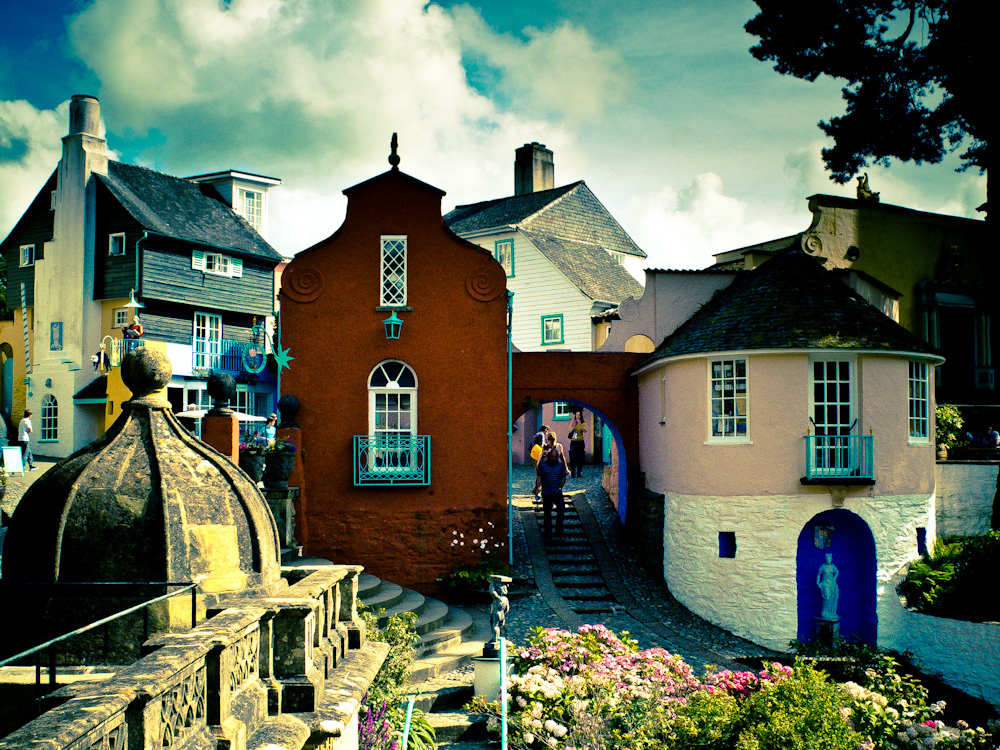The English Village (and Other Places) Posted by Gary Locke on Aug 23, 2017 in Culture, English Vocabulary

Do you live in a town, a township, a village, or a city? In English, we have different names for our communities, but what distinguishes one from another? And what is so special about those English villages, anyway?
The Community
Let’s start by defining a community. To live in a community is to live within a social group which shares a specific locality and common culture and government. There are broader definitions of communities. For instance, we could say that the European Union is a community of nations. But, in the strictest sense of the term, a community is localized. How large that locality is will generally define for us the exact type of community we reside in.
All communities began as settlements, places where several people decided to build individual dwellings and live permanently. As the settlements grew into communities, services to help maintain these communities emerged. Merchants, doctors, and specialists of all sorts moved in. Eventually, government, law enforcement, and municipal rules took shape. This is the evolution of society, and that growth establishes the community’s limits and structure. It can be allowed to vastly expand into a metropolis, like Chicago, or narrow its size to a more modest township. The residents decide.
Settlement Hierarchy
In Great Britain, there is a theory of settlement hierarchy, which arranges settlements into a hierarchical grading based on population and services available in the community. This establishes a status level for communities. The further someone will travel to a community for its services and features, the higher that community sits in the hierarchy. While no hierarchical structure technically exists in the United States, the defining standards are quite similar.
- Hamlet
A hamlet has a population below 100, few buildings, and few services
- Village
A village is larger than a hamlet, and smaller than a town, with few services. You will likely find a church, a shop, a restaurant or pub, and maybe a post office. There may also be a village hall, or community building of some sort. Populations of villages can range from the hundreds to several thousand.
- Town
A town has more services than a village. Expect to find more shops, and even a hospital or clinic. Traditionally, hospitals were built on hills in towns, somewhat isolated from the rest of the community in the event of plague or some other spreadable diseases. The population of a town can range from 1000 – 20,000.
- Large Town
As the name implies, large towns offer more services in a wider area, covering a population of between 20,000 to 100,000.
- Township
Traditionally, in Great Britain, a township was a subdivision of communities served by a local ecumenical parish. Now obsolete, it may still refer to a rural government covering a large area. In the United States, a township is a localized body of land between 6 and 54 square miles with a government system subservient to the larger county jurisdiction. Other English-speaking countries have different, but similar, definitions for townships. Township populations vary widely, but they are smaller than in cities.
- City
Cities, by definition, have many services for a population of 100,000 to 300,000. Expect to find more than one hospital.
- Large City
Here you will find a population of over 300,000 but less than 1 million enjoying even more services, including centers of higher education and mass transit into, around, and out of the community.
- Metropolis
A metropolis is a large city and its suburbs consisting of multiple cities and towns. The suburbs will have separate governments, but they often work in conjunction with the greater metropolitan government. The population is usually one to three million.
- Conurbation
A conurbation is a group of large cities and suburbs, spread out over a wide area, consisting of 3 to 10 million people, with multiple forms of transportation linking all areas. Think of the greater New York/New Jersey area.
The Quaint English Village
I can’t leave this subject without noting the quintessential English village. It is the standard for rural community life and has been idealized in word, song, and image for several hundred years. The word village is an old French word, derived from Latin villaticus, meaning country house.
It is these country houses, with the charming straw thatched roofs and yellow stone facades that many of us associate with English villages. Add to that the surrounding rolling hills and lush woods and valleys, dotted with manicured gardens alive with butterflies and songbirds, and you have a fairyland for many. You may want to read Batsford’s guide books for more on this idyllic view of English life. Or, try watching a few episodes of Midsommer Murders, a television series now entering its 20th season, for a more twisted view of English village life.
As for me, I always associate the English village with a different television show. 50 years ago, actor Patrick MacGoohan played a secret agent who abruptly quits his job to retire to a life of tranquility in a British seaport town, only to be mysteriously kidnapped and brought to a village called, appropriately enough, The Village, from which there is no escape. The opening credits of The Prisoner take us from the conurbation of London to The Village of No Return.
Be seeing you…
Photo by Ian Southwell on Flickr

Build vocabulary, practice pronunciation, and more with Transparent Language Online. Available anytime, anywhere, on any device.




Comments:
Irina:
Perfect,this is really interesting information